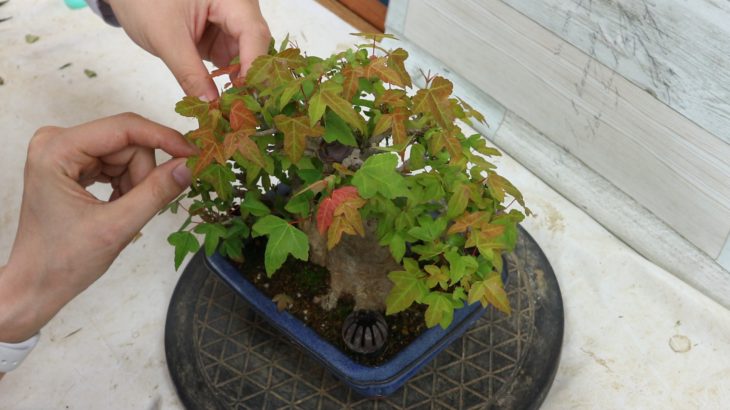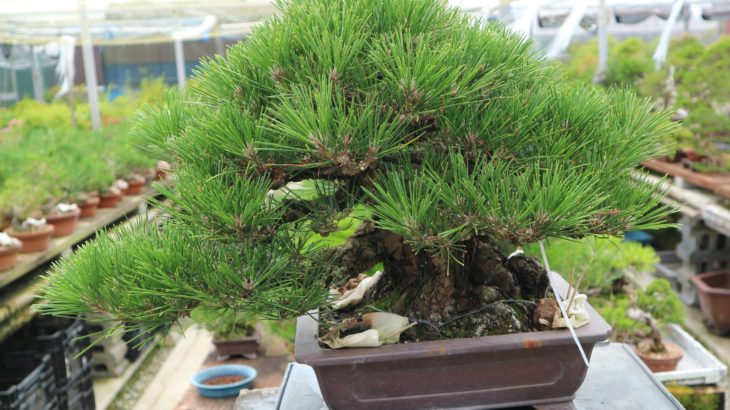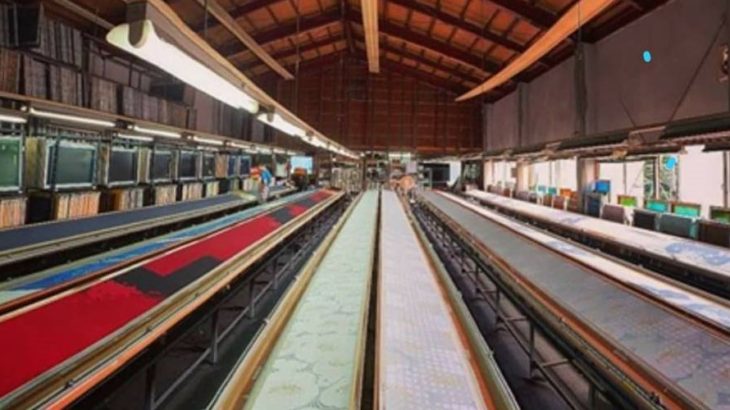Hello, this is Shinji from “Warashibe-choja.jp”. This time I would like to continue talking about bonsai care. We have summarized what you have learned about “Mizu-yari”, “Uekae”, “Sentei”, “Ha-sukashi”, and “Harigane-kake”. This time, I would like you to watch the pruning scenery of Miki, the third generation female bonsai master of Shoka-en, and Yuko, a walking instructor.
Mizuyari ( = Watering )
Watering methods differ depending on the season and each plant, so it is one way to ask the bonsai garden. There are two famous monthly magazines for bonsai in Japan. It seems that there are trends in the Kansai region and the Kanto region respectively, but we recommend “Bonsai-Sekai” and “Kindai-Bonsai”. Please read that as well if you like.
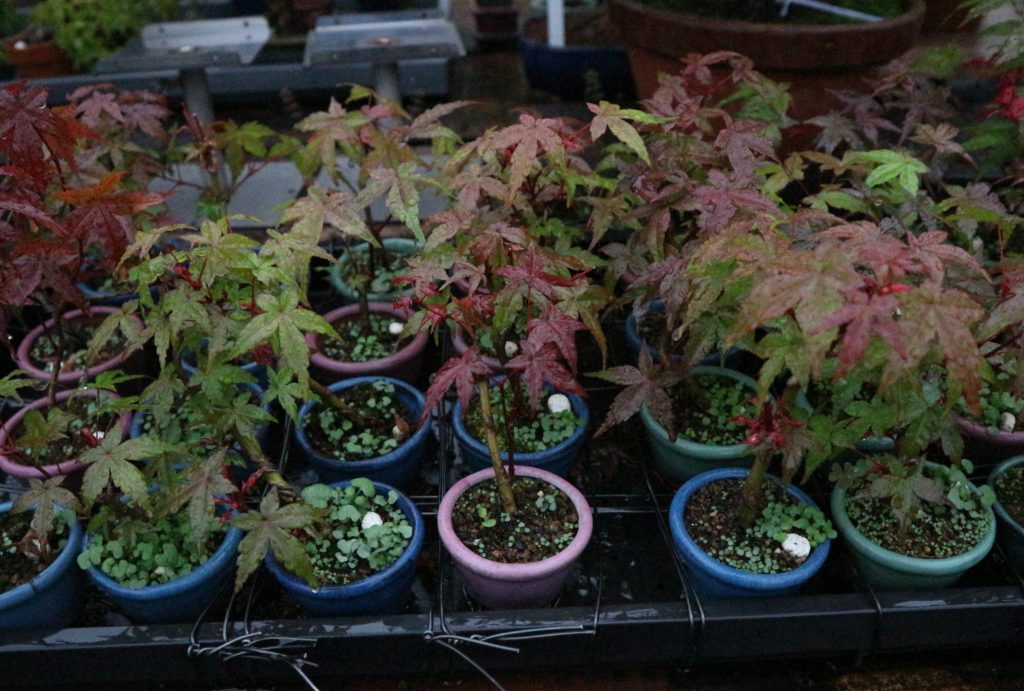
spring & autumn
Once the soil is dry, water it evenly once a day. It’s okay if water comes out from the bottom of the pot.
summer
Please raise the water 2-3 times a day, and give plenty of water in the morning and evening. Be careful not to run out of water in the summer. In bonsai gardens, water may be given four times at times.
winter
Once a day if the soil is dry, once every two days if the soil is damp. Please give water during the warm hours of the day. After the evening, it gets cold, so be careful not to give it water.
Uekae ( = Replanting )
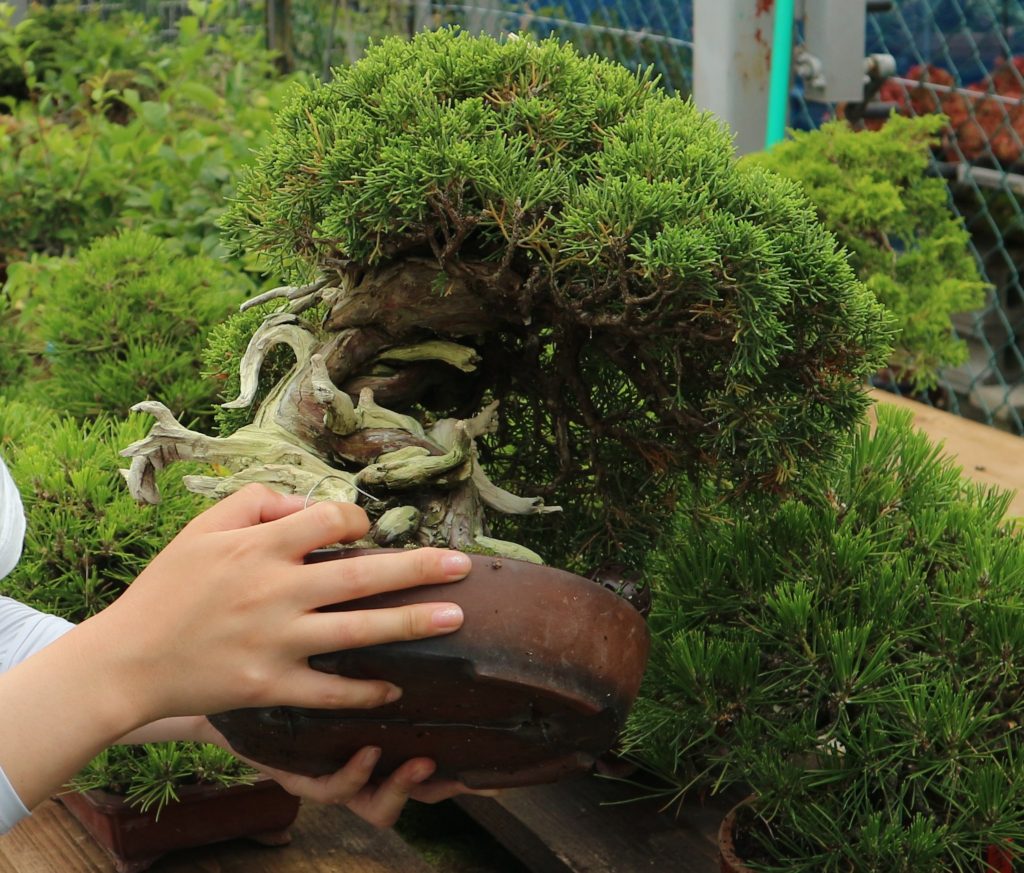
Depending on the size of the bonsai, do Ne-kiri ( = Cut the roots ) once every two to three years and replant it so that the roots do not grow too large. I think it’s a good idea to check the condition of the soil. If the drainage becomes poor or the soil becomes black, it is a sign that it is time to replant. Please ask the bonsai garden about the time of detailed replanting because the time varies depending on the type of tree and the area.
Sentei
Sentei work is indispensable to keep the tree shape beautiful and to protect the tree from diseases. The ugly branch to the trunk is called “Imi-eda”, and the bonsai Sentei cuts it from the root. There are various types of Imi-eda such as “Shitamuki-eda”, “Mikikiri-eda”, and “Sakasa-eda”. I think it’s fun to arrange the tree shape while being taught in the bonsai class once.
This time, I was taught about the maple leaves, Ha-sukashi. In bonsai, cutting the leaves is called Ha-sukashi, which has the effect of increasing the number of twigs and keeping the tree small. Natural plants also lose their leaves due to strong winds breaking their branches and feeding damage by insects and animals. At that time, in order to maintain a certain number of leaves, the leaves have Waki-me (= buds at the leaves) at the root. This Waki-me becomes a new branch and leaf by the stimulus of losing the leaf, and this is repeated every year, and each branch is enriched.
Ha-sukashi
Ha-sukashi is the work of cutting a few leaves, leaving only one or two leaves at the base of the branch, and cutting the other leaves to reduce the number of leaves. Compared to Ha-kari (the work of dropping all the leaves), which is burdensome to recover, Ha-sukashi and Ha-kiri have more than half the amount of leaves, so there are few disadvantages. Ha-sukashi should be applied to weak trees such as maple trees.
Purpose of Ha-sukashi
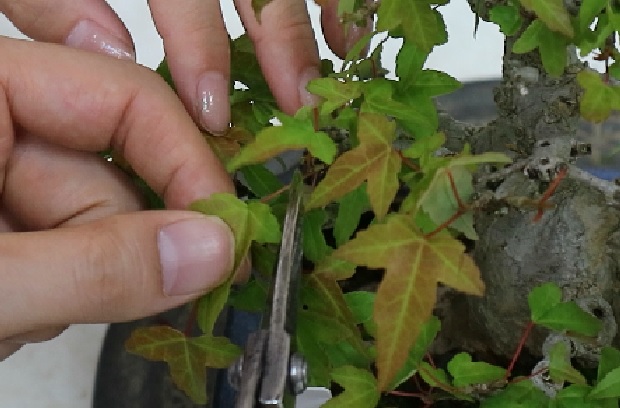
1, adjust the tree vigor
For plants, leaves are indispensable for life support, and the enrichment of leaves directly leads to good tree vigor. Ha-sukashi weakens the strength of the branches, so by repeating this, the leaves can be made smaller and the branches can be made finer.
2, increase twigs
Ha-sukashi uses the same principle as bud picking to stimulate Waki-me and try to increase twigs. By eliminating the leaves that cover the tree, sunlight can enter the inside, increasing the number of branches and making it smaller.
3, make the tree shape compact
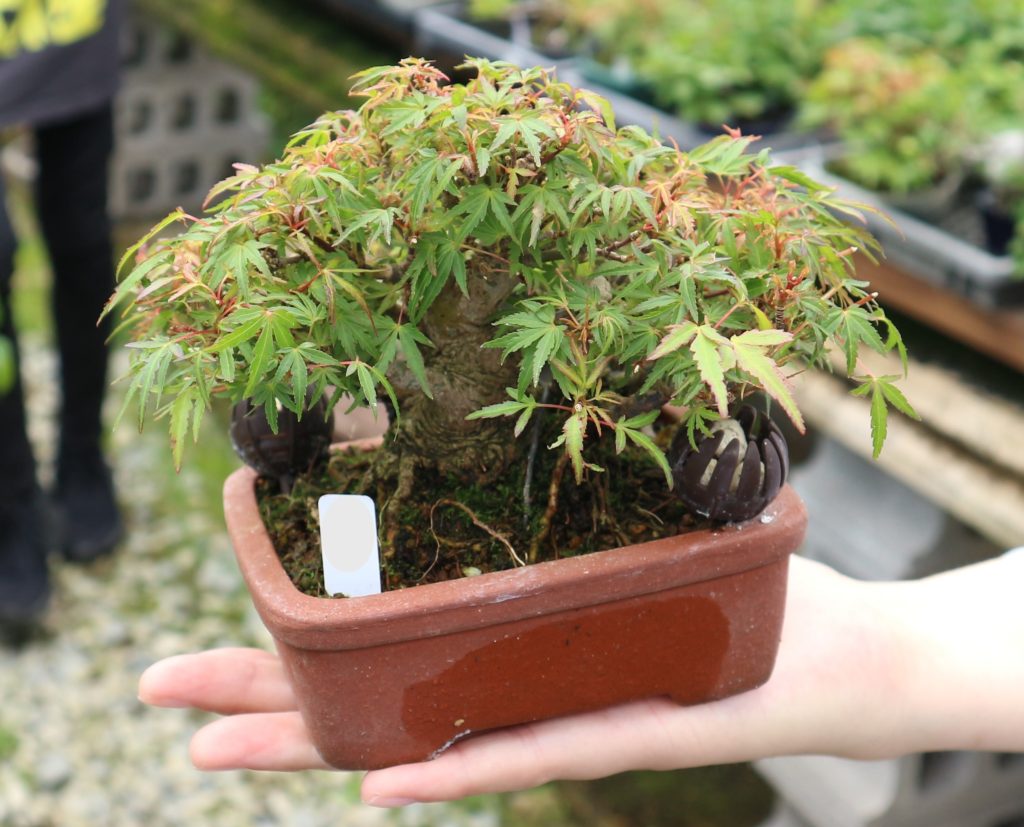
By adjusting the number of leaves, you can make branches with short nodes and make the tree shape smaller. The branches are also less likely to grow thicker, which helps keep the whole small.
4, Prevent illness
Ha-sukashi has the effect of preventing heat buildup inside and getting sick. Maple leaves have a weak tree vigor, so I think Ha-kiri is also good because it avoids veins so that the leaves do not overlap and cuts a part of the leaves.
When to do Ha-sukashi
The time it takes for the bonsai, whose leaves have been cut off, to grow the next bud and open the leaves is calculated back to the time when the new buds grow and the leaves harden. In other words, let’s do Ha-sukashi from the end of May to the end of June. Ha-sukashi puts a lot of strain on the plants, so we recommend this time when it is easy to recover. The time of Ha-sukashi is related to the area and climate, so it is a good idea to check with the bonsai garden.
Harigane-kake (= wiring)
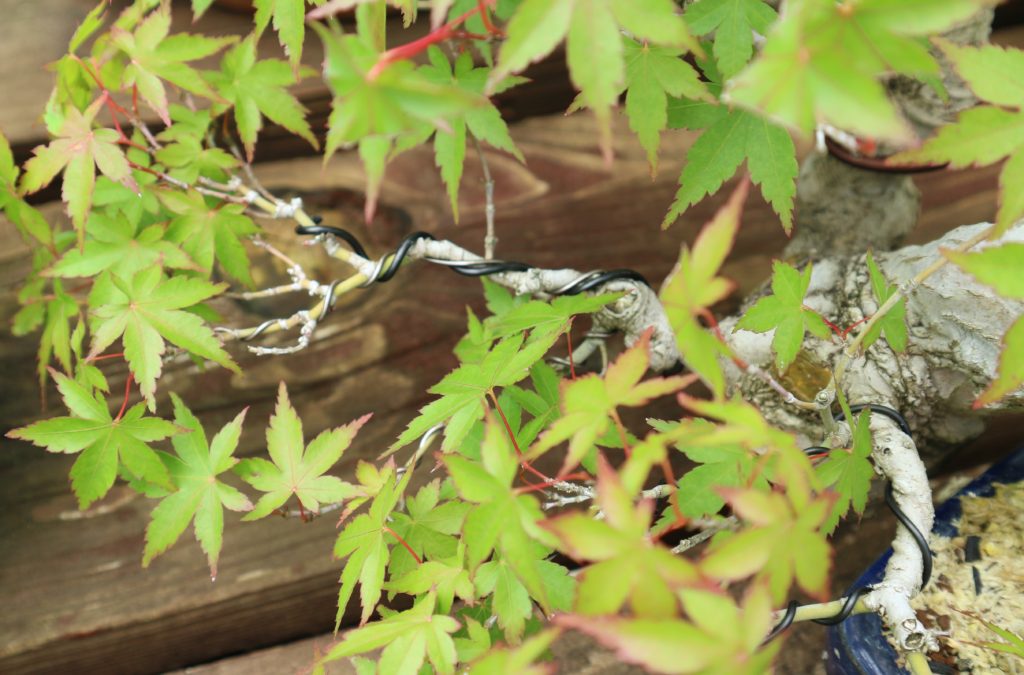
Harigane-kake is an important task in shaping bonsai. By wrapping a wire around a branch, you can create a tree shape or force Imi-eda. You can stretch the good parts of the branches and fix the bad parts. All you need is “wire”, “wire cutter”, and “yatoko” (pliers can be used as a substitute). Copper wire is generally used for wire. Aluminum wire of 2 to 3 mm is recommended for beginners and women with weak power. The thickness of the wire must be changed for each branch, but if the branch can be fixed, there is no problem. Basically, the winding method starts from the thick branch from the bottom to the top. Sho-haku relationships are conducted from the end of autumn to the winter. Zouki relations differ depending on the type of plant, so please consult with a bonsai garden.
This time, I talked about Japanese culture from a different perspective, not about kimono. Although my occupation is different, I learned a lot from listening to the story and sympathizing with it because it protects Japanese culture. Bonsai is more like art than kimono, and there are some works that will not be finished even after 50 years, so I would appreciate it if you could feel like a child who grows up lovingly over time.
I will make a video of how to perform Ha-sukashi. At first, I thought about summarizing the tips of Ha-sukashi, but I would like you to feel the atmosphere without much processing because you will be drawn in when you look at it. Please take a look.
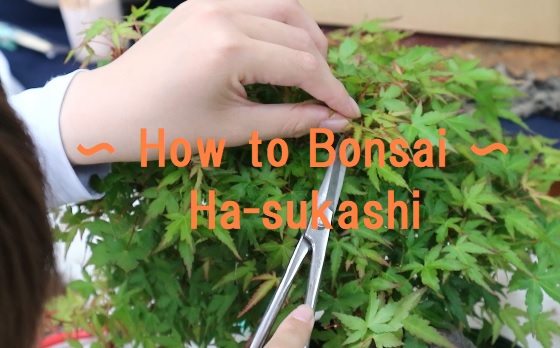
There is also a link to Miki and Yuko who cooperated with this shooting in the summary section of the above video, so please have a look.
